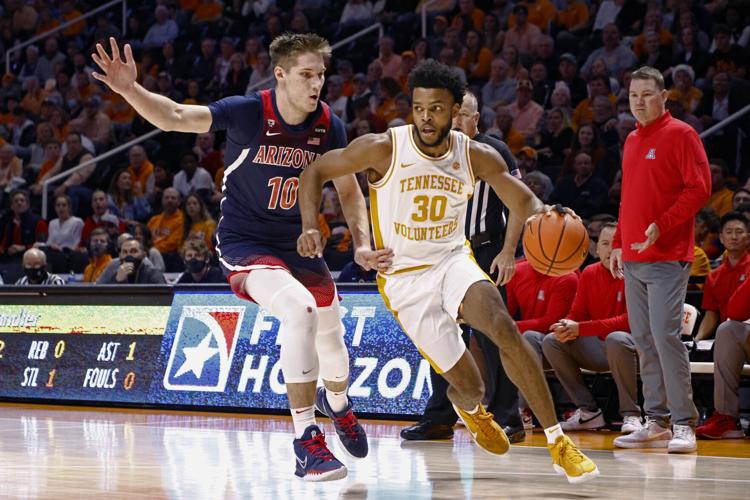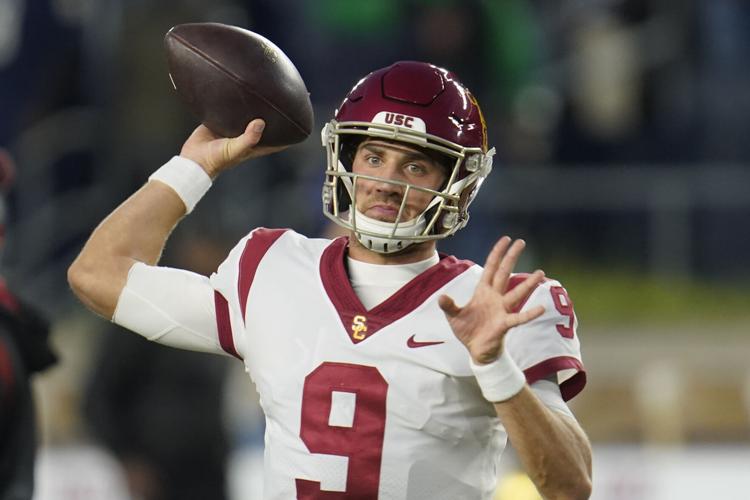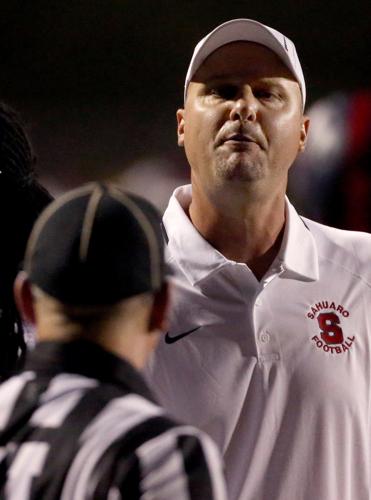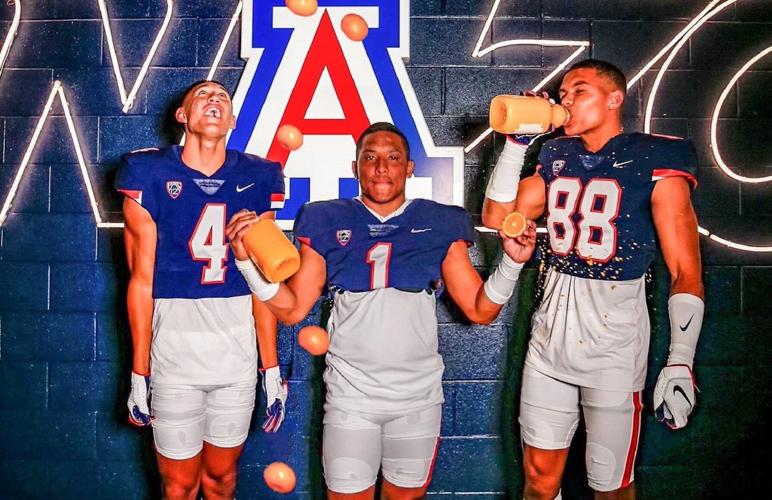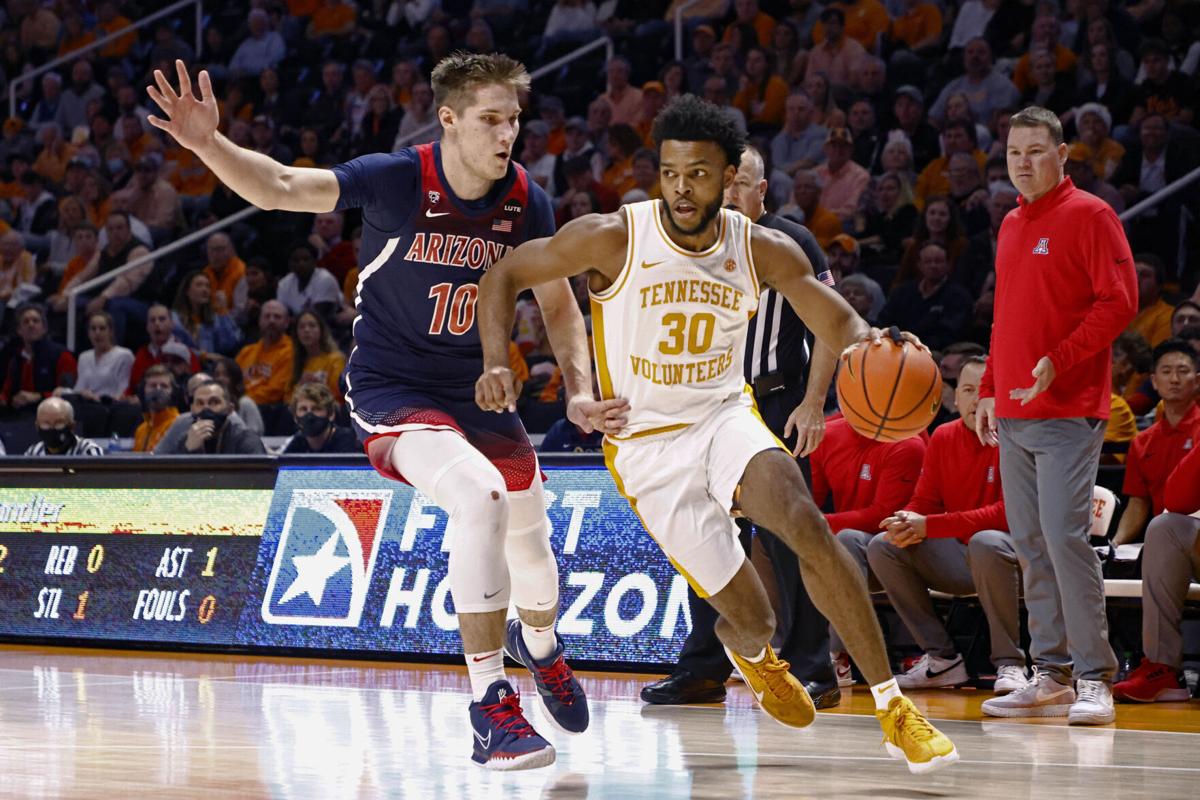The Star's longtime columnist talks on why winning on the road is so tough, why Jedd Fisch deserves more respect and how Scott McKee's legacy at Sahuaro should only grow:
Hostile crowd made Wildcats' task tougher
For 35 years, Arizona has drawn a crowd wherever it has played basketball. The Wildcats don’t sneak into town, eke out a victory and quietly move on. They are a very big target for everyone.
Such was the case Wednesday in a loss at No. 19 Tennessee. Those who predicted Arizona would win comfortably (or at all) have not been paying much attention. When you hit the road, especially when you’re undefeated and highly-ranked, the road hits back.
Blame the refs? Sure. That always makes you feel better (not).
Arizona’s 77-73 loss at Tennessee was far more than the Vols drawing 28 fouls. It was a mix of 20,408 fans and the Vols’ hunger to sting a Top 10 opponent. The home court advantage at the massive Thompson-Boling Arena had to be worth, what, 12 points?
I’ve been to more than 300 UA road games since and once I walk into the visiting arena, I often remember my first visit to BYU’s Marriott Center in 1972, then the nation’s largest with a 22,700-seat capacity (it is now 19,000).
I was the basketball manager at Utah State, standing on the court next to our star player, Jim Boatwright. We both looked around and absorbed the enormity of the Marriott Center. Playing No. 13 BYU that night was hard enough. The ginormous crowd made it mission: impossible.
“Well, we’ll get them at home,” Boatwright said with a chuckle. Reality bites.
Until last week, since joining the Pac-12 and leaving BYU’s Marriott Center in the rear-view mirror in 1978, Arizona had played just two regular season basketball games in front of crowds of 20,000-plus. To no surprise, the Wildcats lost both.
• December 1995: No. 13 Arizona was thwacked 94-85 at Syracuse. Crowd: 24,496.
• January. 2006: North Carolina humbled Arizona 86-69. Crowd: 21,750.
You could see Tennessee’s victory over the Wildcats coming from 100 miles away. Do you realize that 6-9 super senior John Fulkerson has been at Tennessee since 2016? He turns 25 in April. He has played in more games (142) than anyone in Arizona history. He had no fear.
Fulkerson not only scored what seemed like 50 points, but he drew 13 fouls. I don’t know if anyone keeps records of “fouls drawn,” but that’s a Shaquille O’Neal-type number. “I thought that I couldn’t be stopped,” said Fulkerson.
No wonder Arizona lost. But if that game had been played at McKale Center, Fulkerson wouldn’t have drawn 13 fouls. He wouldn’t have felt invincible. My guess is that the Wildcats would’ve won by double figures..
And to those who say Arizona was jobbed by the officials remember this: Tony Greene, the lead official, has called seven Final Fours. He is considered one of the top two or three college basketball officials. Another referee, Terry Wymer, has called two Final Fours. The third, ref, Patrick Evans, is ranked No. 75 in the nation by KenPom.com’s officiating analytics. That’s about as capable as any officiating crew anywhere, at any time.
Did they miss a few? Yes, many. But remember this: Before Lute Olson agreed to that 2006 at the Dean Smith Center against North Carolina, he insisted that a Pac-12 crew of officials be hired, and not ACC refs.
The crew during that 86-69 Arizona loss included Mark Reichling, Bruce Hicks and Michael Reed, men who officiated dozens of games at McKale Center. It didn’t offset the home court advantage.
Tennessee is scheduled to play at McKale Center next season. May the basketball gods have mercy on the Vols.
Jedd Fisch’s low rating lacks insight

Arizona coach Jedd Fisch has brought some continuity and stability to the Wildcats’ football program. It could lead to a decade-best recruiting haul on Wednesday.
USA Today last week ranked the 65 Power Five conference college football coaches for their work in 2021. Somewhat predictably, Arizona’s Jedd Fisch ranked No. 65, assigned a grade of D-.
That grade required no homework; the Wildcats finished 1-11, worst record in Power Five football.
But if the USA Today staff had done any research — if it had done more than grade won-loss records — Fisch would’ve been nowhere near the bottom tier of the grades.
Put it this way: If Fisch had taken control of Alabama’s football program last January, it’s likely the Crimson Tide would’ve gone 11-2 or 12-1. And if Nick Saban had taken charge of Arizona when Fisch did, it’s unlikely Saban would’ve coached the Wildcats to anything better than 2-10. Maybe 3-9 at best.
Few Power 5 coaches did more with less than Fisch did in 2021. Few, if any, rebuilt a program from ashes, restoring recruiting relevance, improving community outreach, establishing a seldom-seen work ethic, energy and feel of positivity the way Fisch did.
For that he gets one grade: A.
Yet USA Today wrote that Fisch “was a disaster.”
If anything was a disaster, it was USA Today’s lack of effort to do more than look at the final standings and react without doing a minimum of Journalism 101 research.
Utah AD, a former Wildcat, finally smells roses
Utah athletic director Mark Harlan, who was not seriously considered to replace Greg Byrne at Arizona almost five years ago, last week told a Salt Lake City radio audience that the Utes expect to have about 60,000 fans at the Rose Bowl against Ohio State. To Harlan, an Arizona alumnus, it must be some sort of “this is long overdue” moment. He was the UA’s director of athletic operations/event management during Dick Tomey’s 12-1 season of 1998 when the Wildcats were (italics) this (enditalcis) close to playing in the Rose Bowl. He was director of football operations when Arizona’s 1993 team was one intercepted pass from another Rose Bowl. Talk about paying your dues.
Justin Wilcox gets big raise
One of Arizona’s challengers at the lower tier of Pac-12 football is Cal coach Justin Wilcox. Last week, after Wilcox reportedly declined an offer to be the head coach at Oregon — he grew up 12 miles away from Autzen Stadium in Junction City — Cal responded by quickly raising $3 million from donors to increase funding for recruiting travel and recruiting staffing. There are no more soft touches in Pac-12 football. Oregon State is in the process of tearing down the west side of Reser Stadium, a $150 million project that will give the Beavers a better football stadium than Arizona. Sad but true.
Kedon Slovis' pick no surprise

Kedon Slovis announced Tuesday that he would be transferring to Pitt.
It was no surprise that former USC quarterback Kedon Slovis chose to transfer to Pitt rather than Arizona, even though Slovis grew up in Phoenix. Most transfer portal QBs are looking for productive season at the controls of a high-end offense with Top 25 potential to improve their NFL draft potential. Arizona simply doesn’t have the capable running backs, receivers and offensive linemen in stock to turn the head of a top-tier transfer QB. Under seven-year head coach Pat Narduzzi, Pitt has won 26 games the last three regular seasons, which is more than any three regular season Arizona period under Rich Rodriguez (24 wins, 2012-2014), Mike Stoops (22 wins, 2008-10), Dick Tomey (23 wins, 1992-94) and Larry Smith (23 wins, 1984-85). Competition in Power 5 football is crazy good.
Bobby Hurley, ASU facing hellish end to 2021
ASU’s scheduled home basketball game against Florida A&M last week was canceled when a power feeding electricity to Desert Financial Arena — that’s the new name of ASU’s archaic basketball arena — went bust. It wasn’t much of a surprise; when you look out of the press box from ASU’s Sun Devil football stadium, you can see a $100 million hockey arena under construction, Talk about priorities that work against Sun Devil coach Bobby Hurley. ASU’s basketball arena is a relic badly in need of millions of dollars of updating. It ranks near the bottom of the Pac-12 with OSU’s Gill Coliseum. The last time a Pac-12 basketball arena was unavailable on game-day for any reason was January 1987, when Arizona couldn’t play at WSU’s Beasley Coliseum and was diverted on short notice to the old Bohler Gym on campus. A once-a-decade snowstorm shut off power to Beasley Coliseum. The game was delayed 40 minutes and about 4,000 fans walked across campus and squeezed into the old gym. The scheduled TV broadcast in Tucson was cancelled.
Scott McKee leaves Sahuaro after 13 years

Sahuaro head coach Scott McKee announced that he is leaving the school.
Scott McKee was a football and track standout at Sabino High School in the 1990s, an all-city linebacker who walked on at Arizona and pursued the career path of his father, Larry McKee, a former Arizona lineman (1968-71) who became the head football coach at Pueblo and Sabino.
When a young Scott McKee got his first head coaching job, at Pueblo High in 2004, it was one of the most difficult rebuilding tasks in the state. The Warriors went 12-40 in five seasons under McKee, but Sahuaro, looking for a builder with energy, hired McKee in 2009.
The Sahuaro that McKee inherited wasn’t at all like the Sahuaro of the 1970s, '80s and '90s, when it was a fashionable suburban location that won big under Howard Breing, Will Kreamer, Nemer Hassey and Virg Stan. Sahuaro won 92 games in the '90s; in the first decade of the 2000s, it won 39.
Last week, after 13 years at Sahuaro, McKee and school principal Roberto Estrella reached an agreement to part ways. McKee was 71-63 at Sahuaro, which, in hindsight, was a best-case scenario. Dealing with COVID-19 issues and diminishing participation, Sahuaro went 1-12 the last two, truncated, seasons.
“A change was needed on both sides,” McKee said in a twitter message. “I concluded on good terms.”
Although McKee’s success at Sahuaro was often overshadowed by open enrollment-blessed Salpointe Catholic and suburban powers Cienega and Ironwood Ridge, he stuck it out and posted impressive 10-3, 9-3, 9-3 and 8-3 seasons.
McKee operates his own painting company when not coaching. If he chooses to return to high school football, he’d probably be at the top of the list of almost any Tucson school searching for a head coach.
My two cents: Wildcats' recruiting haul is only the start of development process

Prior to signing with the Wildcats to play in 2022, Arizona quarterback signee Noah Fifita, was joined by Servite High School teammates Tetairoa McMillan, left, and Keyan Burnett, right, when he visited Tucson.
The Los Angeles Times last week wrote that Arizona football coach Jedd Fisch’s recruiting haul at Anaheim's Servite High School hasn’t been topped at one Southern California school since new USC coach Pete Carroll signed four elite prospects from Long Beach Poly High School in 2002.
Fisch signed five-star receiver Tetairoa McMillan, four-star tight end Keyan Burnett, three-star quarterback Noah Fifita and three-star linebacker Jacob Manu from Servite. That recruiting success led to Rivals.com ranking Arizona No, 24 nationally, trailing only No. 18 Stanford in the Pac-12.
Here’s a word of caution: USC’s 2002 recruiting haul from Long Beach Poly didn’t turn out anywhere near expectations. That’s football recruiting. It is the most difficult game in which to predict a young man’s athletic success.
Here’s how USC’s 2002 signees from Long Beach Poly fared:
• Running back Hershel Dennis, a four-star prospect: After off-field issues that kept him off the field for most of two seasons, he twice suffered ACL knee injuries. And then USC recruited Reggie Bush to play the same position. Dennis was at USC for six years but was never the school’s leading rusher.
• Offensive lineman Winston Justice, a four-star prospect: He started 12 games as a freshman and 10 as a sophomore. But he was then sidelined for off-field issues and missed the 2005 season. He was subsequently drafted in the second round and played eight NFL seasons.
• Safety Darnell Bing, a four-star prospect: Academically ineligible his first season, Bing returned to be a Trojan regular and an All-American in 2005. He played four years in the NFL.
• Defensive lineman Manuel Wright, a four-star prospect: Academically ineligible, he enrolled at Long Beach City College and eventually returned to USC and became starter in 2004, chosen an honorable mention All-Pac-10 lineman. He played three years in the NFL.
Signing a top football prospect is just a fifth of the battle. Next comes (1) health, (2) academics, (3) development, (4) commitment and (5) luck.


